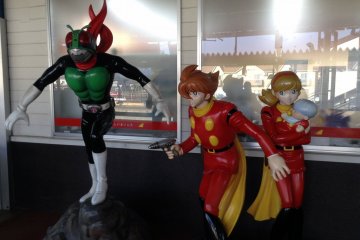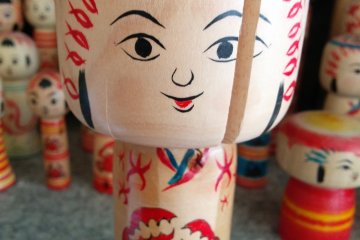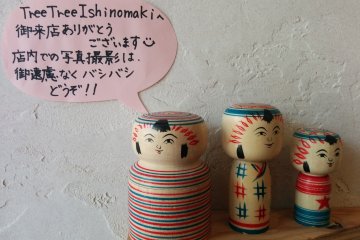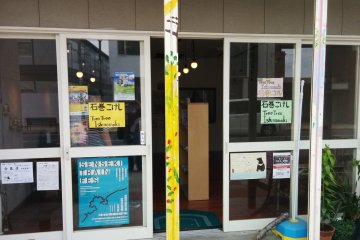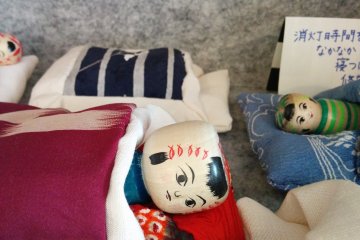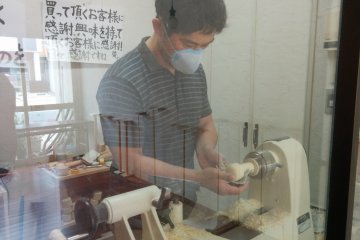"Shibu-kawaii". It means subdued cuteness. The Japanese word is fitting to describe the traditional wooden kokeshi dolls found throughout the northeastern region of Japan: Tohoku. The more you look at the no-limb, yet handcrafted dolls, the more you fall in love with them. Every kokeshi fan knows there are 11 traditional types of kokeshi tracing their one hundred fifty year plus origins to regional hot spring towns. Competing with them are the countless variations known as modern kokeshi, which are also popular with more fantastical designs. Then in April 2015 the kokeshi world had an unexpected, but very welcome surprise.
Tree Tree Ishinomaki (ツリーツリーイシノマキ) is a kokeshi shop in Ishinomaki, Miyagi Prefecture. The owners created an original style kokeshi in the hopes to spread happiness throughout the town and world. The city is still recovering in many ways from the massive earthquake and tsunami in 2011, so how can kokeshi help?, I naively thought. Chatting with the friendly owners, I inquired more about their vision and what makes their kokeshi stand out among an already unique art form.
Each traditional type of kokeshi has its own set of characteristics. The shape, the design, and even the materials have guidelines if that kokeshi doll is to be labeled a kokeshi of that region. Modern kokeshi are more creative and free flowing, without any hard rules. Tree Tree Ishinomaki's kokeshi are in a way modern with their sea-inspired patterns, but they are done in a traditional style. Ishinomaki style kokeshi feature fish designs as hair or hair ribbons, a large rounded head, a blue/green color added to the standard red and black, and a wider than normal smile. Additionally, the machine the kokeshi are made on is not the traditional lathe, but a similar spinning machine imported from the United States. When given as a gift or taken home and put on display, these kokeshi create a conversation piece. Ishinomaki should not be thought of as just a victim of the tsunami. Its locals are happy and full of spirit and the fishing heritage is alive and well. So what better way to share this fact than with a smiling souvenir?
Tree Tree Ishinomaki is open daily 11:00-16:00, closed Mondays. The shop may close on random days should the owners be promoting their kokeshi around the prefecture through events and competitions, so it may be best to call if you are really keen on visiting. Japanese and simple English are OK. As the store is still relatively, its inventory is still growing. There are usually a handful of kokeshi for sale, but most of what you see are samples. Buyers can order a kokeshi doll with a wait period of up to a month. Shipping is availiable around Japan. The store also plans to open an area where visitors can paint their own kokeshi dolls in the near future. The story behind the kokeshi and skill with which they are produced are more than just shibu-kawaii, they are desirable! Pick one up on your visit to Ishinomaki and share the city with your part of the world.






